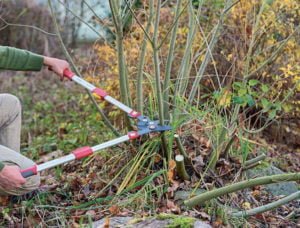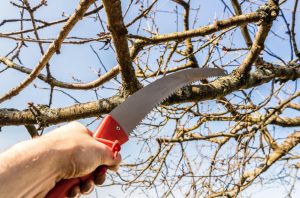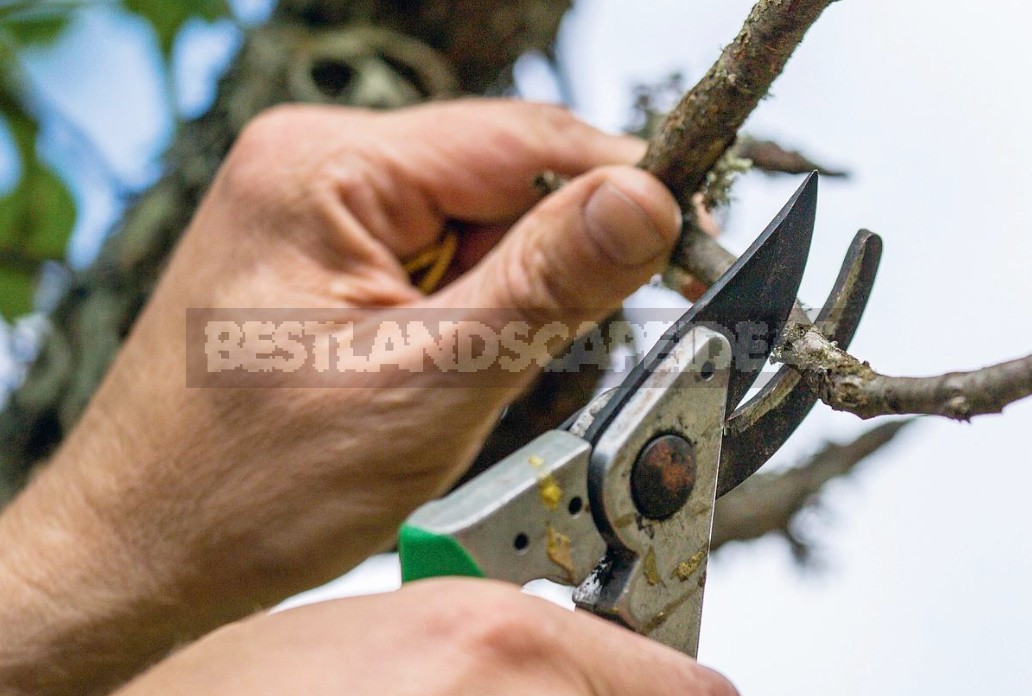
You can achieve high and stable yields by pruning and forming the crown of trees. And this should be done not on an occasional basis, but annually.
Many novice gardeners do not dare to take up secateurs, for fear of harming the tree or mistakenly believing that nature itself will solve the necessary tasks. Some start pruning, but do it with caution, believing that each cut branch leads to a loss of crop. But this is exactly what the thickened crown leads to.
What should be the shape of the crown
You do not need to be afraid to use pruning, but you should not start it without preparation. In winter, you can study literature, consult with experienced gardeners, or even take a master class with them. The main thing is to represent the pruning process and know what it is used for.
First, the gardener should carefully examine the tree and decide (if it is a young tree), what should be the shape of the crown. Although the old tree can be given the desired shape of the crown, but it will take more than one year to work on it.
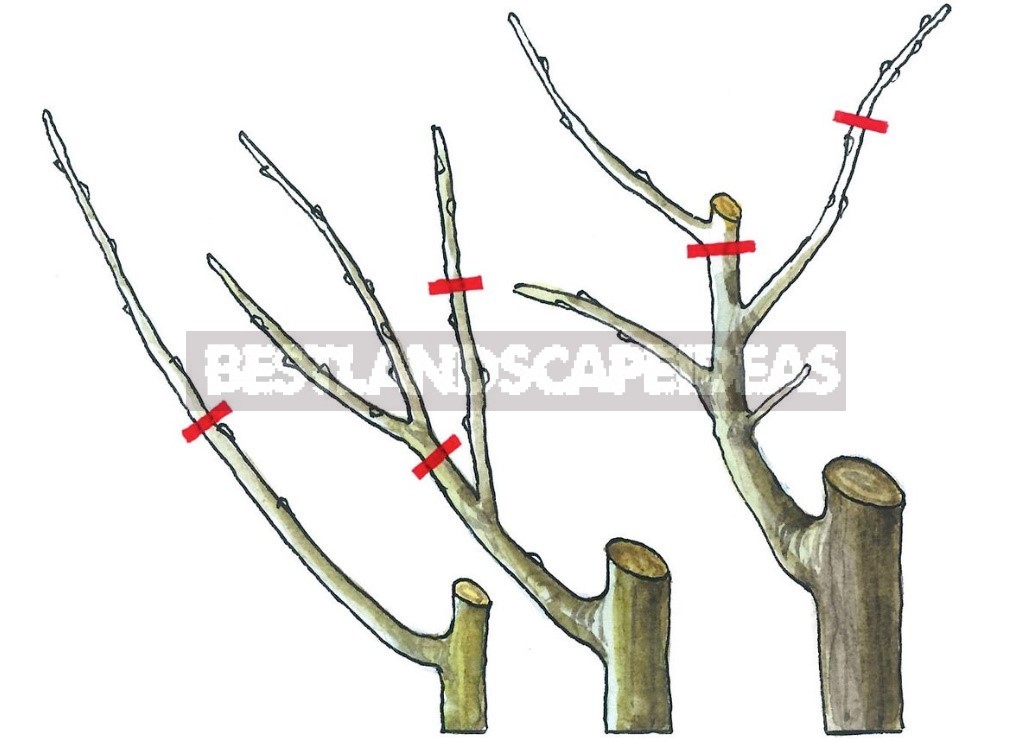
Cut out sick, withered and severely broken branches. Remove the root growth and tops. Branches that go inside the crown interfere with lighting and create a danger of future contact with other branches. Therefore, cut out all intersecting and rubbing branches. In this case, you do not need to cut them completely, but you can shorten one of the branches by transferring it to the kidney – cutting it above the kidney, directed outward. It is important that the shoot that has grown out of it does not thicken the crown.
Cut into the ring* and branches with an incorrect (unusable) angle of departure.
These are branches that grow almost vertically, that is, with an acute angle of departure or directed down to the ground.
In the first case, this arrangement of the branch, as a rule, leads to a fault in a strong wind, as well as congestion of fruit or stuck snow. The latter is especially dangerous because of the damage to the bare wood of the tree during severe frosts.
In the second case, the branch directed to the ground lags behind in growth and interferes with the gardener when working in the garden.
*A ring is called an influx at the base of a branch. It contains many cells capable of rapid division. Thanks to them, even a large area of the cut is quickly scarred.
The techniques of cropping
Depending on the purpose, there is a difference between forming, regulating fruiting and rejuvenating pruning.
Forming pruning is used for thinning thickened crowns and forming new branches from tops, as well as after re-grafting trees. Most often, this pruning is used on young trees when forming the crown to evenly place skeletal and overgrown branches and create good lighting conditions on the surface and inside the crown.
In adult fruit-bearing trees, pruning is performed that regulates fruiting – in order to maintain a good growth rate to ensure productivity.
Rejuvenating pruning is performed on old trees to resume growth and balance it with fruiting. Experienced gardeners often apply at the same time regulating and rejuvenating pruning.
There are two types of pruning: shortening (pruning) and thinning (cutting).
Shortening
In this type of pruning, cut off part of the annual shoot or branches or perennial branches by removing the upper part. With strong shortening, dormant buds are awakened on a cut branch, the growth of side branches is more intense, and fruit branches are strengthened. The cut is made either over the kidney, or over the side branch. This is a so-called translation trim. The shoot or branch will then begin to grow intensively in the direction chosen by the gardener.
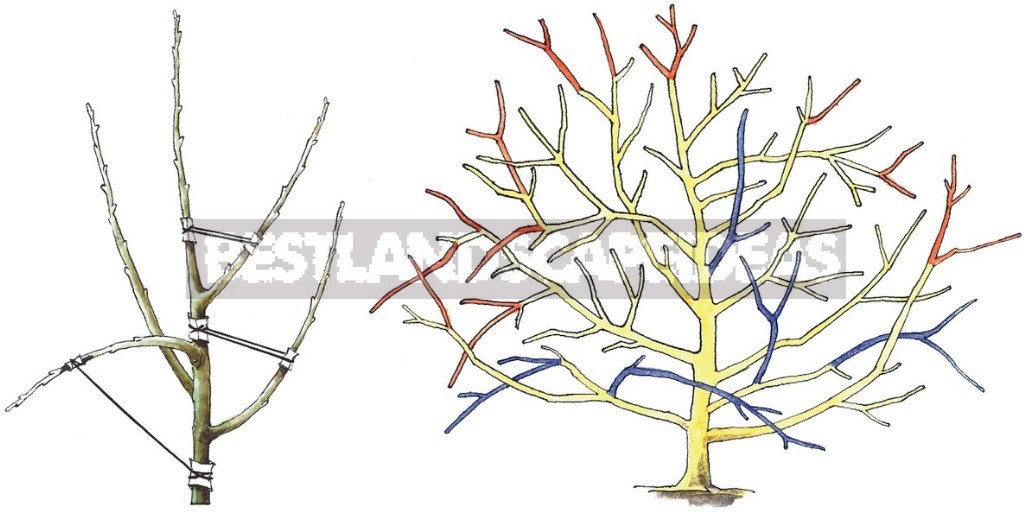
Another method of shortening, often used by gardeners when cutting borders or hedges, is blind shortening. Sections in this case can be located in any planes, this is a topiary haircut, in which the section may fall on the branching or internode of branches.
Thinning
In this type of pruning, an annual or perennial branch is cut out completely. Thinning improves lighting inside the crown. When cutting a branch, vascular connections are redistributed, and the flow of nutrients and moisture is distributed more evenly between branches located above the cut point. But at the same time, strong wolf shoots grow at the cut-off point.
Pruning techniques
Pruning is carried out before blooming of kidneys. Unnecessary branches are cut into a ring, that is, the cut is made at the border of the thickening of branches. The left thorn prevents the wound from overgrowing, but if pruning is done in winter, it is better not to cut it, so that the kidney is not damaged in severe frosts. The remaining spike is removed later, in the warm season.

- The cut is made very low, the kidney will shrink.
- The cut was made with a bully.
- High cut, possible deviation of the escape.
- The bevel of the cut is not directed correctly.
- The correct cross section.
- Left a spike for the garter escape.
Young branches when the shortening is cut into the kidney. A garden knife is installed above the base of the kidney by 1-2 mm and at an angle of 30°, with a sharp movement of the knife, the branch is cut off. The upper edge of the cut should be level with the top of the kidney. Minor deviations are allowed, that is, just above or just below the tip of the kidney. If the deviations are significant, the cut is made incorrectly. A cut made below the base of the Bud leads to its shrinkage, and made high-deflects the upper growing shoot from the direction of growth of the branch.
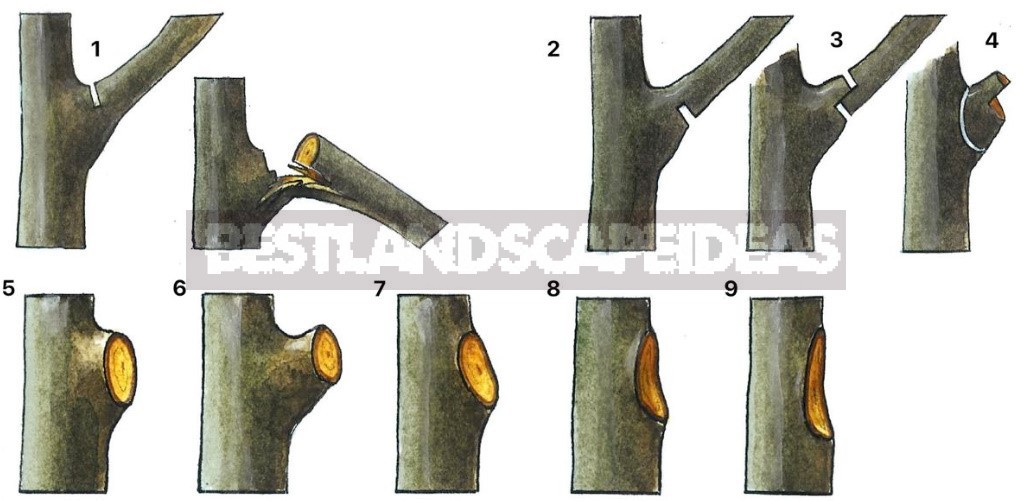
- Incorrect cutting leads to breakage.
- The first washed down.
- The second washed down.
- Hemp tenderloin.
- The correct tenderloin.
- Wrong cutting, left a large stump.
- Wrong cut, oblique cut.
- Wrong cut, deep cut.
- Wrong cut, long cut.
Other pruning techniques
Pinching
During the growing season, along with pruning to form the crown, you can use pinching of shoots. It can be used to form a branch covered with generative bases, that is, to ensure that it branches for subsequent formation. It is better to carry out pinching when 15-20 days remain before the end of the growth of the shoot.
The breaking of the shoots
Very often, after pruning, many shoots from dormant buds begin to develop in the crown. These shoots thicken the crown, and few of them will be useful in the future for its formation. Therefore, such shoots are broken out until their base is lignified. To prevent new sprouts from appearing again from this point of growth, the shoots are broken out with the heel.
Kidney blinding
This technique is used on young trees to prevent the growth of unnecessary shoots. Plucking unnecessary buds with your hands helps to accelerate the growth of shoots necessary for the formation of the crown.
Over time, for novice gardeners, these works on pruning and forming the crown will become familiar and will be included in the list of priority activities in the garden.


